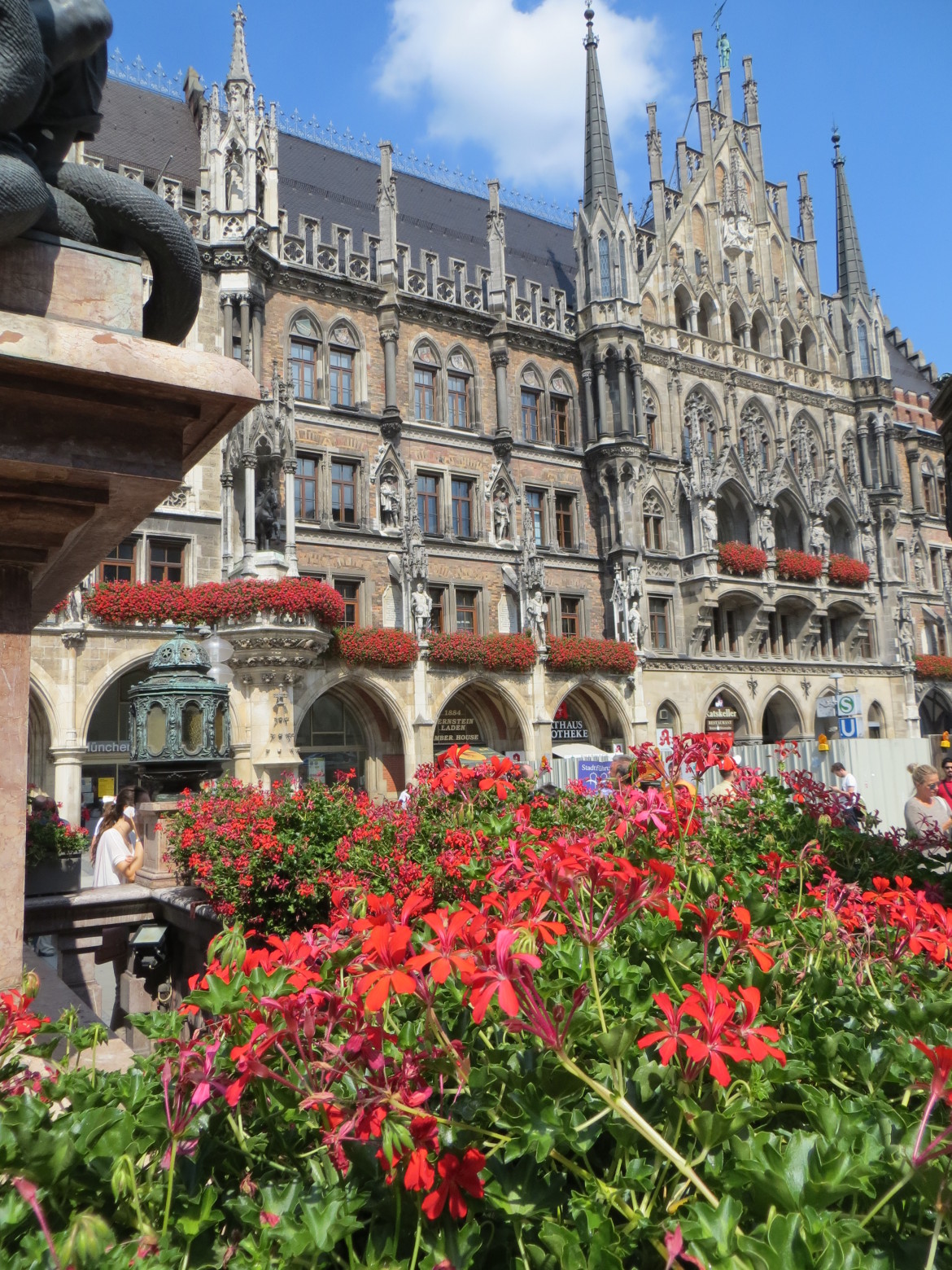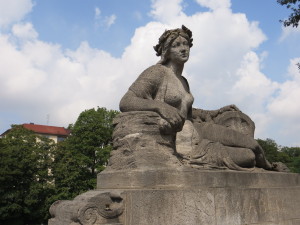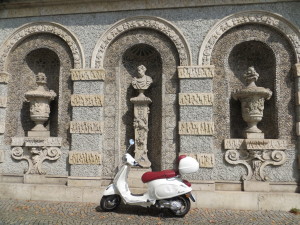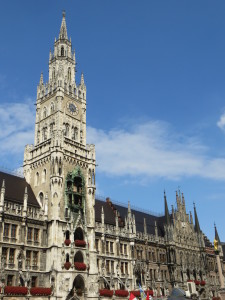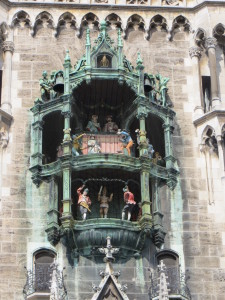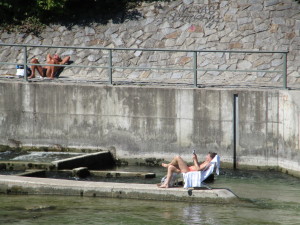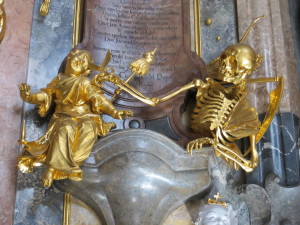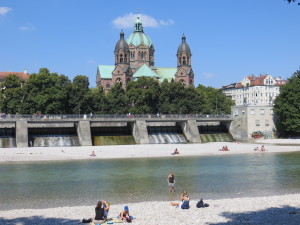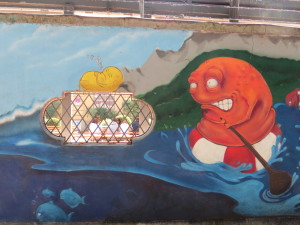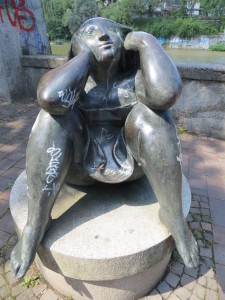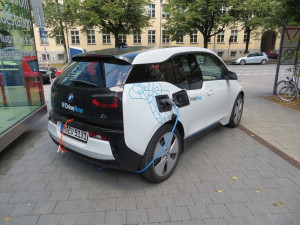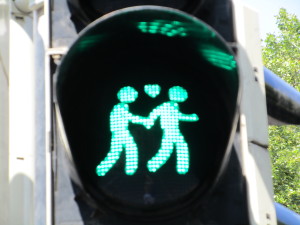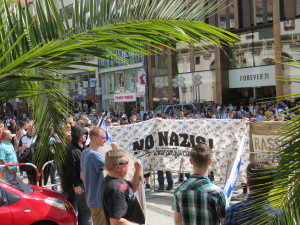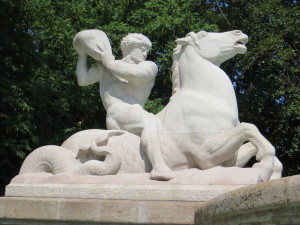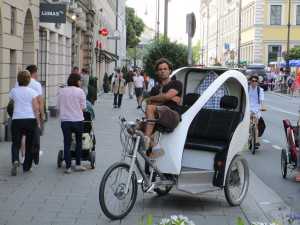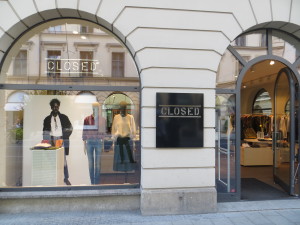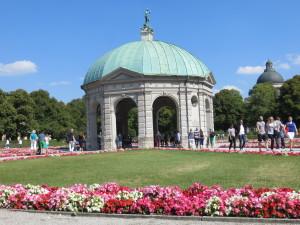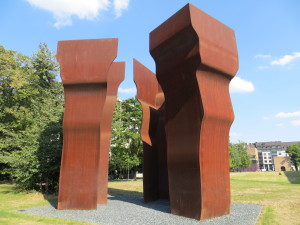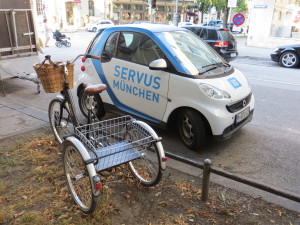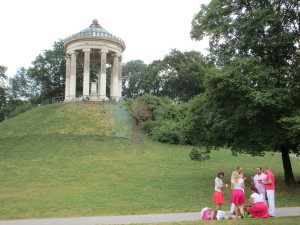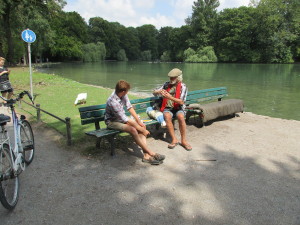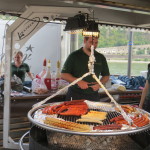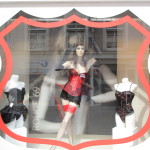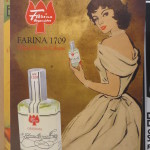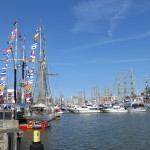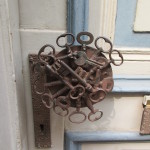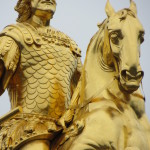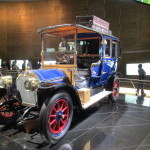When people think of German traditions, images of Oktoberfest often come to mind first, with busty women in dindle dresses serving beer and pretzels to drunken men wearing lederhosen and felt hats.
This is all quite accurate. At least in Bavaria. That’s the southern part of Germany where the harvest party originated. (Oktoberfest is celebrated in September, by the way. So much for German precision.) Although in recent times Oktoberfest has spread to more urbane northern regions of the country, the “free state” of Bavaria is still where you’ll find the real deal, and the city of Munich is the heart of Bavaria. It’s called München in German, pronounced something close to moon-chin, meaning place of the monks. Back in the 12th Century the Bavarian duke, Henry the Lion, dismantled an old salt bridge and built a larger one across the Isar River in order to better control the flow of taxes. Monks settled around the base of the new bridge, and München was born. Nowadays it’s the top tourist destination in Germany, both for Germans and international travelers. So of course we made a pilgrimage there too. But our main reason for visiting Munich had nothing to do with tourism. For us it was all about a branch of George’s family tree, in this case a fully upright, breathing, living relation.
But first we went looking for more dead ones. At the northern edge of Bavaria, where it borders Saxony, we visited a cluster of tiny towns that George had determined were ancestral homes of members of his family. Ground zero was a burg called Lochau, where another of George’s great-great-great grandfathers was born. His name was Peter Herold. (What, you were expecting another Johann?) Unlike Johann Germer and his family, Peter Herold left for America on his own, in 1841, at the age of 24. On the ship during the crossing, Peter met his future wife, Kunigunda (now there’s a name you haven’t heard before). Peter and Kunigunda arrived in Baltimore on George’s birthday, though 125 years earlier. Two years later Peter and Kunigunda married at Baltimore’s Zion Lutheran Church, which still stands across from city hall (which also still stands, though you might not think so if you watched CNN’s coverage of the Baltimore riots).
Unfortunately, present-day Lochau offered us little insight into Peter’s life there. For one thing it’s a very small place (population 150) and those who reside there are employed in mostly agricultural endeavors. So finding anyone in the middle of a weekday with the spare time and resources to help George in his genealogy quest proved impossible. In the nearby village of Alladorf we did find the small church that Peter and his family attended, and we came across some familiar names of dead people in a small cemetery located in another blip on the map called Trumsdorf (though interestingly, we saw many more gravestones of people who are probably related to Laurie – part of her family hails from that area too). A flyer posted outside the church entrance listed a phone number for information, so George may have another lead to follow up on after we get back home. But the cluster of small towns amounted to little more than a pleasant detour on our way to Munich, and a glimpse into rural German life far different than the dense cityscapes of Frankfurt and Hamburg.
In Munich we had no difficulty finding a relative of George’s. Her name is Heike, and actually, she was the one who reached out to George’s family, about 8 years ago. Heike grew up knowing little about her father other than that he was an American serviceman stationed in Germany in the years before her birth in 1965. Heike’s mother claimed he died in the Vietnam War. That was just one of many lies she told Heike about her father. But after her mother died, Heike found letters her father had written, and she learned more about him. His name was Tom, and not only did he not die in Vietnam, he probably didn’t even serve there (although he did serve in the Korean War). In reality he and Heike’s mother split up while he was still stationed in Germany, and after his discharge from the Army he returned to Baltimore.
Heike hoped to contact her father, so she used the internet to research his relatives in Maryland. Thanks again to George’s brother Joe and his website, Heike was able to connect with her American family. Sadly, she learned her father was indeed deceased, though he passed away in 1986, not during wartime. But Heike also learned that she had several close living relatives. That’s because Tom was one of five sons of George’s grandfather William, the Baltimore city fireman. Tom’s brother John was George’s father, which makes George and Heike bonafide first cousins.
(Does this seem like another head-spinning chain of names? Be thankful at least it’s not Johann, Johann and Johann!)
Heike also has two living uncles on her father’s side, Don and Bill (other sons of William). And while she was disheartened to learn that she would never meet her father, she was overjoyed to discover so many other living relations. Over the years she kept in contact with them. Several years ago Don and his wife visited Heike in Munich, where she has lived all her life. More recently she met Bill’s daughter Terry, another first cousin, when Terry’s husband had business in Germany.
Now it was George’s turn. And like the moment we met Cordula and her family, meeting Heike felt instantaneously like catching up with an old friend (or in this case, old family). We spent our first evening in Munich hanging out at Heike’s apartment, far from the tourist areas, and enjoyed a simple German meal in a nearby local beer garden. The next day Heike played tour guide as we walked around the Marienplatz with its fairy-tale gothic and medieval buildings, and its larger than life Glockenspiel that features a troop of dancing Moroccans and jousting knights. We also meandered through the beautiful and calm English Gardens, Germany’s largest municipal park, and took in several other city sights. Many people were buying and wearing Oktoberfest outfits in anticipation of the coming celebration, and although it was still summer, a cold spell had just passed through the area, causing leaves to change color and drop. It was as if the harvest season had already begun. Compared to my first visit to Munich 25 years ago, I felt the old city center was now far more commercial and generic appearing, with shopping streets full of the same international brands we’ve seen in other German cities (not to mention elsewhere in the world). Previously, the Marienplatz had seemed to me a quainter, more regional treasure. Even so, Munich is an extremely appealing and varied city. We’ll let the pictures do the rest of the talking. Among the photos, you’ll see two from yet another moment of political unrest we unwittingly found ourselves smack dab in the middle of. This one featured honest-to-goodness neo-Nazi youths who were staging a small rally. Fortunately they were opposed by a far larger crowd of locals and tourists and, we hope, the rest of the world. In fact the fascist boys had to be protected by about two dozen police, while the opposition shouted out slogans of disgust and cleverly held up a cloth screen to block the crowd’s view of the so-called supremacists. But don’t get your panties in too much of a bunch over German neo-Nazism. They are a tiny minority in a country that has learned tolerance almost to a fault. Besides, everyone knows we’ve got the same kind of garbage going on in the good ol’ US of A.
Our last day in Munich was tinged with sadness. Heike’s cat Sina, who was diagnosed with lymphoma a few months ago, took a sudden turn for the worse and had to be put to sleep. Heike was pretty distraught when we saw her that evening. She told us she’d been crying all day. But we enjoyed several good hours together, including another great local meal, and afterwards she thanked us for taking her mind off her pet and cheering her up. We were sad too, most of all for saying goodbye to another new German friend. Heike hasn’t had the easiest life, but she remains ever-smiling and optimistic, so we know for sure she’s got George’s family genes. Like our new friends in Frankfurt and Bremen and Braunschweig, our cousin and friend Heike is one more reason we hope to return to Germany sooner rather than later. (But next time, we’re bringing a suitcase full of broccoli.)
We’ve got just a few days left on this journey, and no more ancestor-hunting to do, so we’re going to relax and enjoy our last two stops in Germany like regular tourists. It’s a fairly easy drive from Munich to the island town of Lindau on the coast of Lake Constance. Lindau is a place we’re looking forward to visiting just for fun. But our original reason for putting it on the itinerary was very different.
